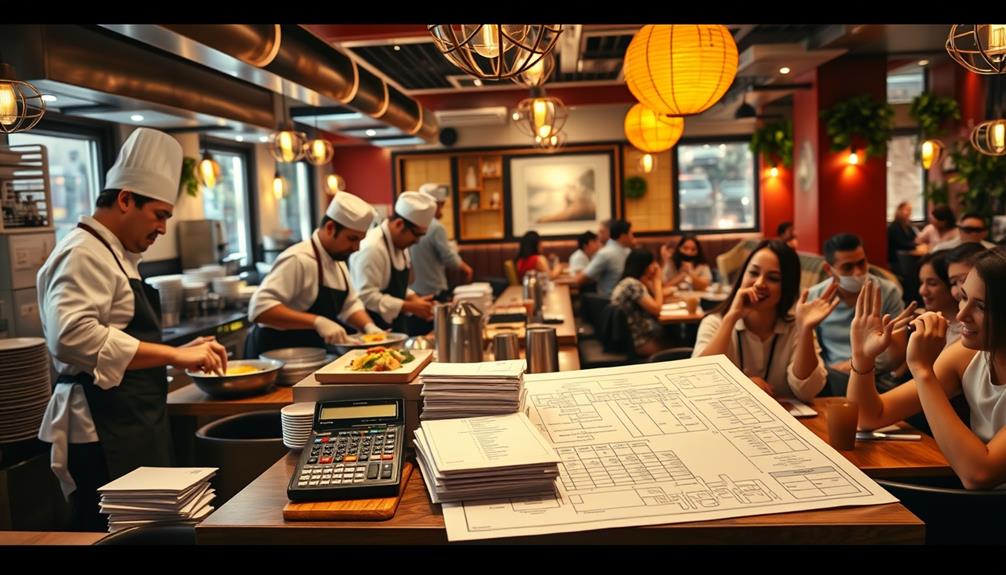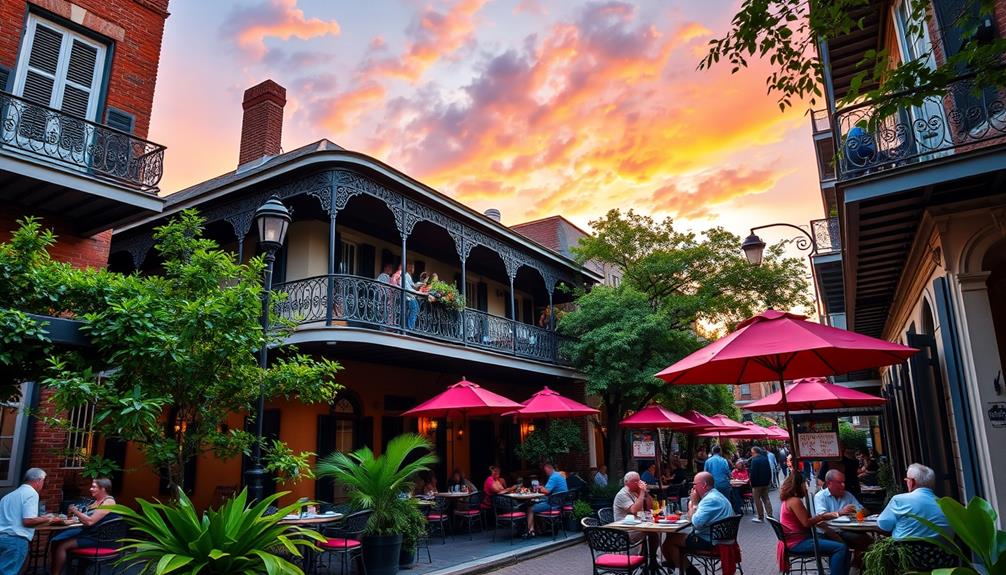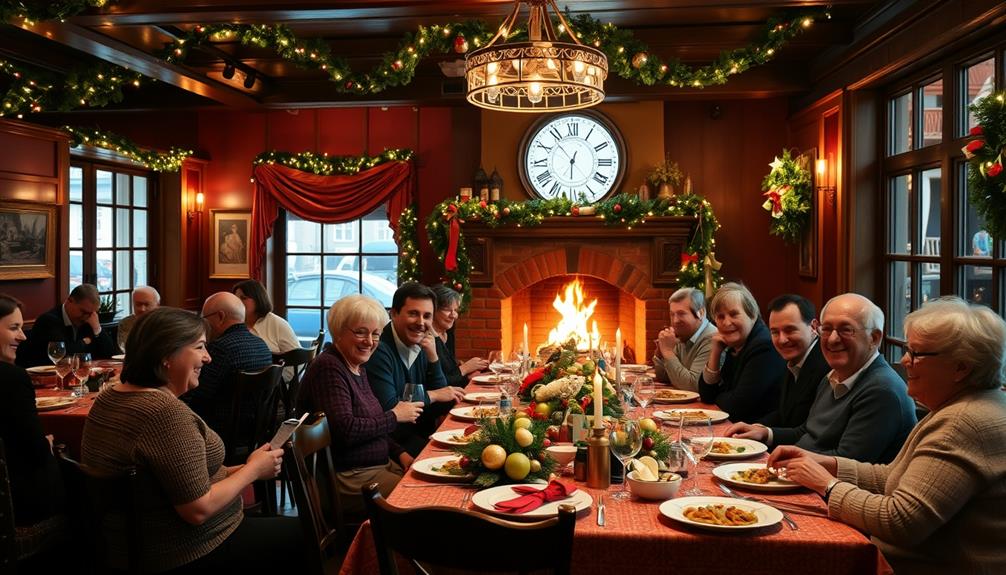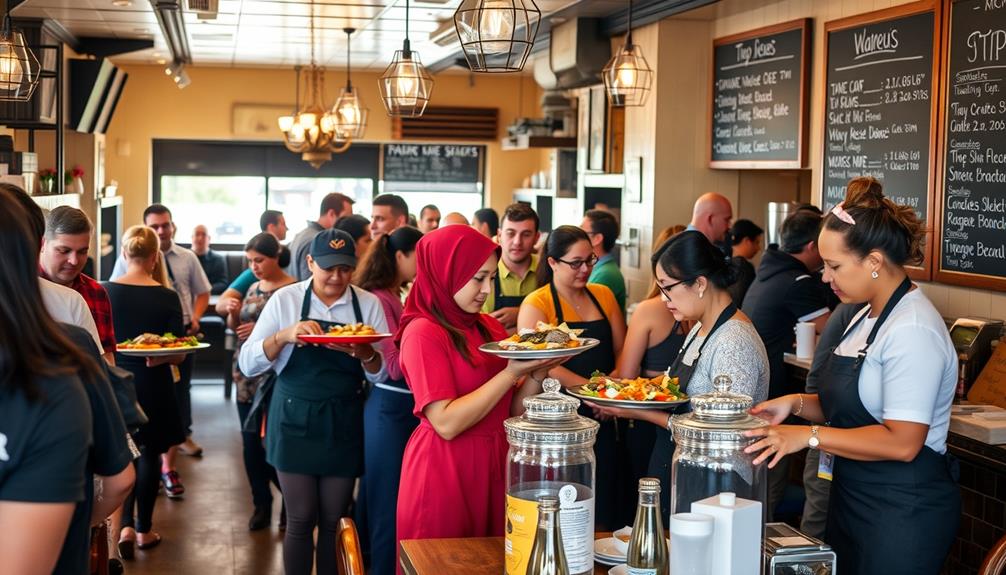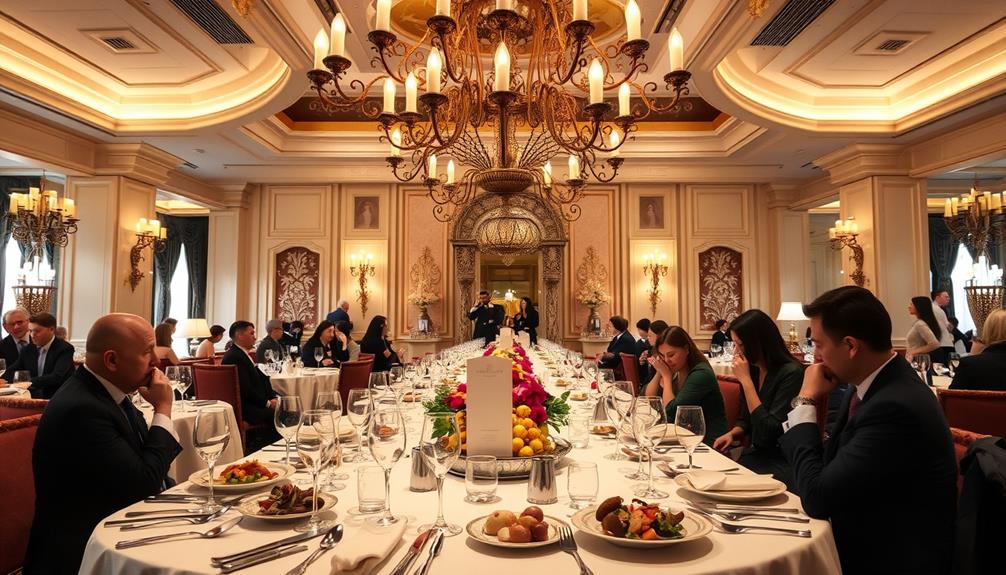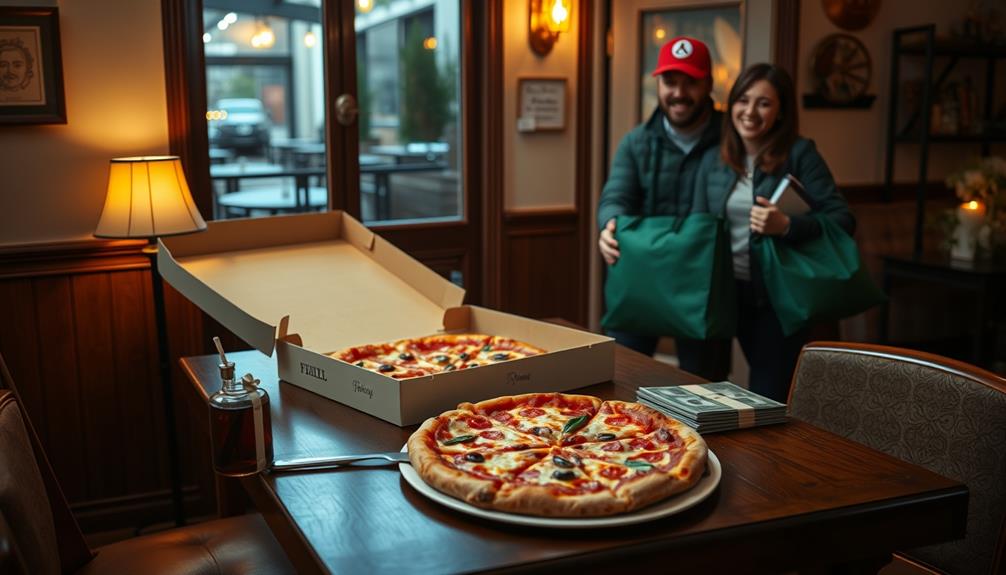Opening a restaurant usually costs between $95,000 and over $2 million, depending on your location and concept. For leased properties, expect to invest around $275,000, while purchasing can average $425,000. Initial expenses like security deposits, construction, and kitchen equipment can add up quickly. You'll also need to account for monthly rent and utility costs, which can be significant. Plus, regulatory fees for licenses thoroughly vary. If you want to avoid costly mistakes and get a clearer picture of all these expenses, keep exploring further insights and details.
Key Takeaways
- Opening a restaurant typically costs between $95,000 and over $2 million, depending on various factors like location and size.
- Average costs for leased properties are around $275,000, while purchased properties average $425,000.
- Initial expenses such as construction and kitchen equipment range from $140,000 to $350,000 and $75,000 to $115,000, respectively.
- Monthly rent for restaurant space typically ranges from $2,000 to $12,000, with utilities adding another $1,000 to $1,200 monthly.
- Licensing and permit costs can vary widely, averaging between $2,500 to $200,000 based on operation complexity and location.
Overview of Restaurant Costs

Opening a restaurant can be a thrilling venture, but the financial commitment involved is significant. You'll find that the total costs to open a restaurant can range widely, from $95,000 to over $2 million. Factors like your location, concept, and whether you lease or purchase the space heavily influence these restaurant startup costs.
On average, you're looking at around $275,000 for leased properties and $425,000 for purchased ones. It's vital to have a clear budget plan to manage these expenses effectively and avoid potential pitfalls.
Initial expenses are important to evaluate and typically include a security deposit and construction costs, which can range from $140,000 to $350,000.
Don't forget about kitchen equipment, which averages between $75,000 and $115,000. You'll also need to budget for licenses and permits; business licenses can cost anywhere from $50 to over $7,000, while a liquor license might set you back between $300 and $14,000, depending on your state.
Breakdown of Startup Expenses
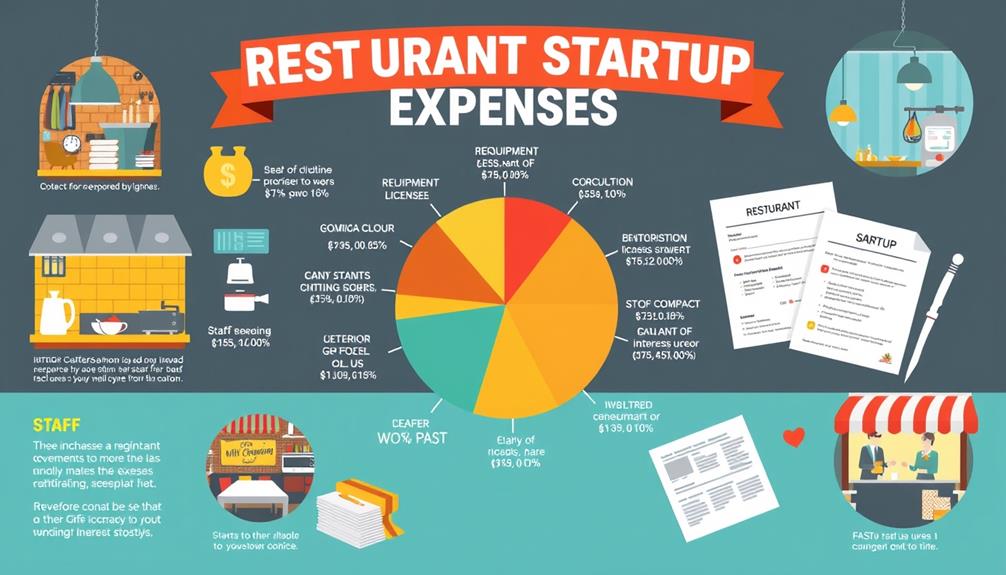
When diving into the breakdown of startup expenses for your restaurant, it's important to understand where your money will go. The average cost to open a restaurant typically falls around $275,000 for leased spaces, but this can range from $180,000 to $800,000, depending on your restaurant type.
Additionally, evaluating top hotels with water parks can provide insights into unique dining experiences that may enhance your restaurant's appeal.
A significant portion of your startup expenses will be construction costs, which could set you back between $140,000 and $350,000, depending on renovation needs.
You'll also need to take into account kitchen equipment, with estimated costs between $75,000 and $115,000, ensuring you have the necessary tools to serve your customers efficiently.
Don't forget about furniture and tableware, which can add another $20,000 to $80,000 to your budget.
Initial food inventory expenses usually range from $5,000 to $25,000, and bulk purchasing can help mitigate these costs.
Finally, licensing and permits are vital, with business licenses costing anywhere from $50 to $7,000 and liquor licenses ranging from $300 to $14,000 based on local regulations.
Understanding these startup expenses will help you plan effectively for your restaurant's future.
Space and Utility Costs
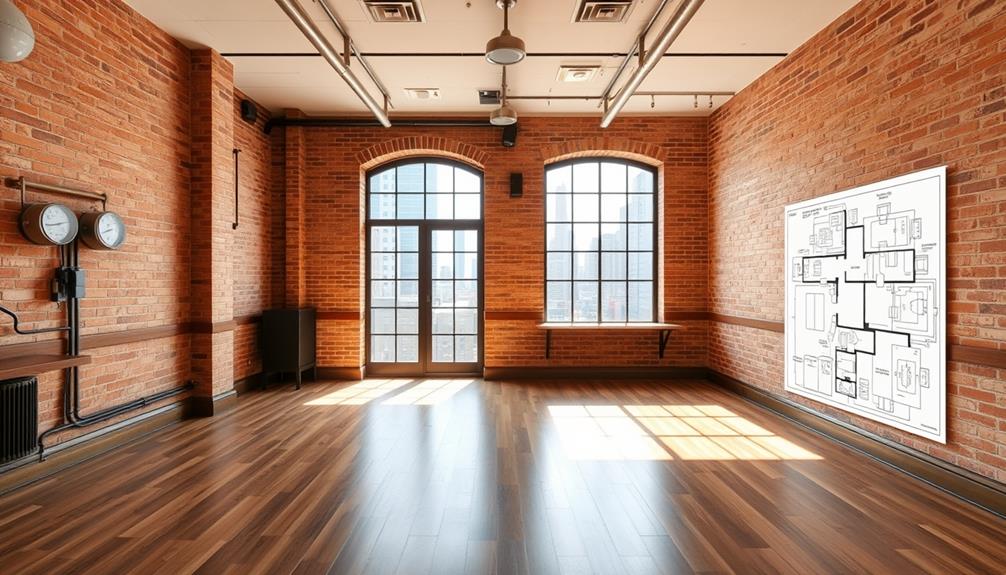
Maneuvering space and utility costs is essential for your restaurant's financial planning. The average monthly rent for restaurant space can range widely from $2,000 to $12,000, depending on your location, with a median rent around $5,000. This variability can be influenced by factors such as local demand and economic conditions, similar to how astrology influences attractiveness.
The cost per square foot for restaurant space typically falls between $100 and $800, greatly influencing your total opening costs.
Utilities will also play an important role in your operating costs, accounting for about 3% to 5% of your total expenses. For larger spaces, expect monthly utility expenses to range from $1,000 to $1,200.
Electricity costs average $2.90 per square foot annually, while natural gas costs hover around $0.85 per square foot. These figures highlight the importance of managing these utility expenses effectively.
If you're considering a ghost kitchen, you'll benefit from considerably lower rent expenses, as these setups typically require only 200-300 square feet of commercial space. This drastically reduces your upfront investment and ongoing costs, making it a compelling option for new restaurateurs looking to minimize financial risk.
Labor and Inventory Expenses
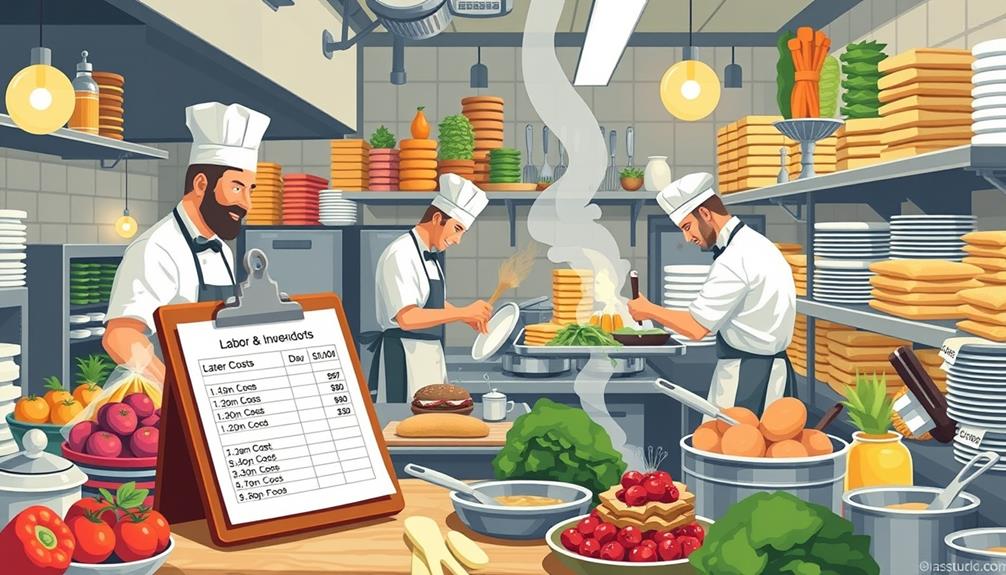
Labor and inventory expenses frequently represent a considerable portion of your restaurant's overall operating costs. Typically, labor costs account for 25% to 30% of these expenses, while food costs generally range from 28% to 35%. If you operate a steakhouse, expect food costs to soar up to 40%.
To effectively manage these expenses, you must consider employee benefits and payroll taxes, which can inflate total labor costs. Additionally, understanding financial considerations for elderly care can provide insight into managing operational costs efficiently.
Effective staffing and scheduling are essential to control these expenses without sacrificing service quality. Inventory management also plays a critical role in maintaining profitability. Unfortunately, 58% of restaurant owners report challenges with managing inventory, leading to food waste and lost revenue.
Building strong vendor relationships can help you negotiate better pricing, which 40% of restaurant owners actively pursue. By focusing on these aspects, you can streamline your operations and keep both labor and food costs in check, ultimately enhancing your restaurant's profitability.
Prioritizing efficient inventory management and nurturing vendor relationships will make a noticeable difference in your bottom line. Remember, every dollar saved in labor and inventory can contribute considerably to your restaurant's success.
Regulatory and Licensing Fees
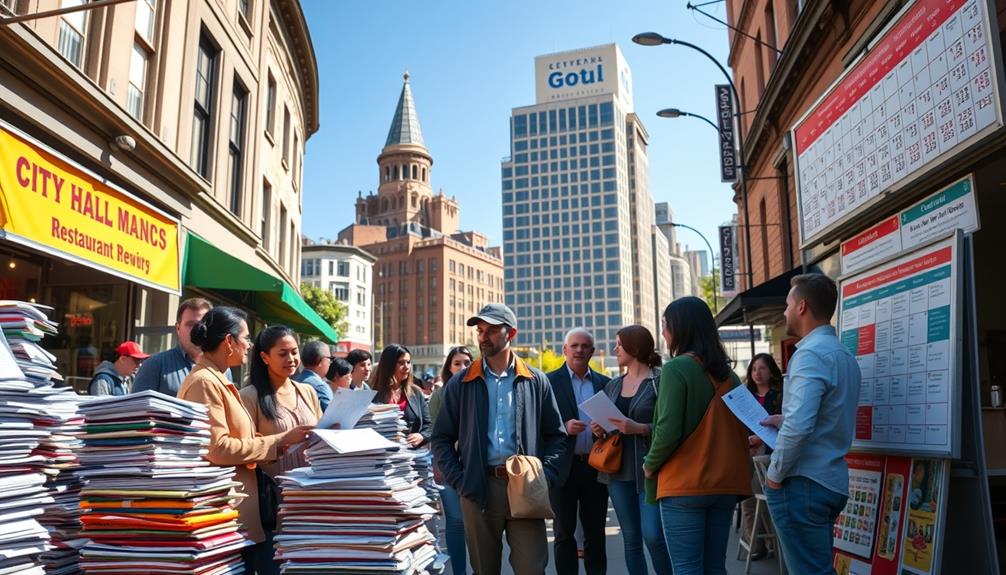
Managing operational costs goes beyond just labor and inventory; regulatory and licensing fees can greatly impact your budget too. When opening a restaurant, you'll face various licenses and permits that are essential for legal operation. The costs can vary considerably based on your location and the type of food service you plan to provide.
Here's a quick overview of some common regulatory fees:
| Type of License/Permit | Typical Cost | Notes |
|---|---|---|
| Food Service License | $100 – $1,000 | Required for serving food |
| Liquor License | $300 – $14,000 | Varies by state; may take months |
| EIN, Certificate of Occupancy, Health Permits | $20 – $1,000 | Additional necessary permits |
On average, you should budget between $2,500 to $200,000 for licenses and permits. This range depends on the complexity of your operation and local regulations. Don't overlook these fees, as they play an essential role in getting your restaurant up and running smoothly.
Frequently Asked Questions
How Much Money Should You Have to Open a Small Restaurant?
To open a small restaurant, you should aim for at least $180,000. Consider your location, concept, and essential expenses like security deposits, kitchen equipment, and contingency funds to guarantee you're financially prepared.
How Profitable Is Owning a Restaurant?
Owning a restaurant can be profitable, but it depends on your management skills and market niche. With effective planning and cost control, you can achieve profit margins of 3% to 15%, depending on your establishment's type.
Can You Start a Small Restaurant With ,000 Dollars?
You can't realistically start a small restaurant with just $10,000. Costs for licenses, equipment, and initial inventory often exceed that amount. Consider alternatives like food trucks or ghost kitchens, but even those may surpass your budget.
Is 50K Enough to Start a Restaurant?
You'd think $50,000 could launch a culinary empire, right? Unfortunately, it barely covers the basics for a small venture. With rent, equipment, and licenses, you're likely to end up scrambling for funds quickly.
Conclusion
So, you thought opening a restaurant would be a breeze, didn't you? With all the mouthwatering dreams of culinary success, it's easy to overlook the hefty costs lurking behind the scenes. From space and utilities to labor and licensing, it all adds up quicker than your kitchen's monthly food bill. But hey, who wouldn't want to plunge into a sea of expenses for a chance at serving up joy? Welcome to the deliciously expensive world of dining!
